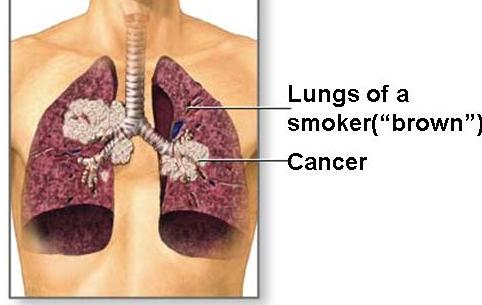 |
|
|
|
Lung cancer

Lung cancer is a malignant tumour of the
lungs. Most commonly it is bronchogenic carcinoma (about 90%). Lung
cancer is the most lethal malignant tumour worldwide, causing up to
3 million deaths annually. Only one in ten patients diagnosed with
this disease will survive the next five years. Although lung cancer
was previously an illness that affected predominately men, the lung
cancer rate for women has been increasing in the last few decades,
which has been attributed to the rising ratio of female to male
smokers.
CausesExposure to carcinogens, such as
those present in tobacco smoke, immediately causes cumulative
changes to the tissue lining the bronchi of the lungs (the bronchial
mucous membrane) and more tissue gets damaged until a tumour
develops. The role of smokingSmoking, particularly of cigarettes,
is believed to be by far the main cause of lung cancer, which at
least in theory makes it one of the easiest diseases to prevent In
the United States, smoking is estimated to account for 87% of lung
cancer cases in the US. (90% in men and 79% in women). There are
hundreds of known carcinogens?such as polynuclear aromatic
hydrocarbons?present in cigarette smoke. The length of time a person
continues to smoke as well as the amount smoked increases the
person's chances of contracting lung cancer. If a person stops
smoking, these chances steadily decrease as the lung damage is
repaired. Signs and symptomsSymptoms that suggest lung cancer
include: For a
consultation please call 1-800-558-9697
| |
| Home Media Testimonials Contact Us | |